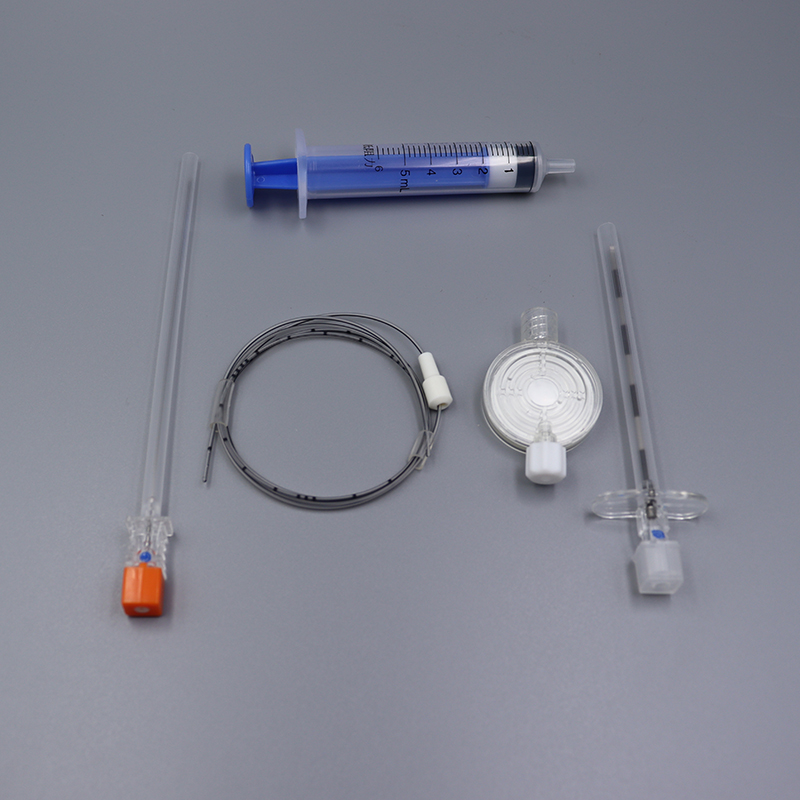As medical advances continue to revolutionize the field of anesthesia, combined spinal epidural anesthesia has become a popular and effective technique for pain relief during surgery and other medical procedures. This unique approach combines the advantages of spinal and epidural anesthesia to provide patients with enhanced pain control and optimal comfort. Today, we will take an in-depth look at the applications, needle types, and characteristics of combined spinal-epidural anesthesia to help you learn more about this revolutionary medical technology
Combined spinal-epidural anesthesia, also called CSE anesthesia, involves injecting drugs directly into the cerebrospinal fluid (CSF) surrounding the spinal cord. This allows for rapid onset of action and deeper anesthesia compared to other methods. The drugs used in CSE anesthesia are a combination of a local anesthetic (such as bupivacaine or lidocaine) and an opioid (such as fentanyl or morphine). By combining these medications, anesthesiologists can achieve rapid and long-lasting pain relief.
Combined lumbar-epidural anesthesia is widely used and covers a wide range of surgical procedures. It is commonly used in lower abdominal, pelvic and lower extremity surgeries as well as in labor and delivery. CSE anesthesia is particularly beneficial in obstetrics because it can relieve pain during labor while maintaining the ability to push during the second stage of labour. Additionally, CSE anesthesia is increasingly used in outpatient procedures, with patients experiencing shorter recovery times and shorter hospital stays.
When it comes to the types of needles used in combined spinal epidural anesthesia, there are two main designs: pencil-point needles and cutting-point needles. Pencil-point needles, also called Whitacre or Sprotte needles, have a blunt, tapered tip that causes less tissue trauma during insertion. This can reduce the incidence of complications such as headaches after dural puncture. Picked needles, on the other hand, have sharp, angled tips that can pierce fibrous tissue more easily. These needles are often used in patients with difficult epidural spaces because they allow for more efficient access.
The combination of spinal and epidural anesthesia in CSE anesthesia provides several unique features that contribute to its effectiveness. First, CSE anesthesia allows for incremental dosing, meaning the anesthetic agent can be adjusted throughout the procedure, giving the anesthesiologist greater control over the level of anesthesia. This is particularly beneficial during longer procedures where the patient may need to increase or decrease drug levels. Additionally, CSE anesthesia has a faster onset of action and can provide faster pain relief than an epidural alone.
Additionally, CSE anesthesia has the advantage of prolonged postoperative pain relief. Once the spinal medications wear off, the epidural catheter remains in place, allowing continuous administration of analgesics over a longer period of time. This helps minimize postoperative pain, reduces the need for systemic opioids, and improves patient satisfaction.
Shanghai TeamStand Corporation is a professional medical device supplier and manufacturer that recognizes the importance of providing high-quality equipment for combined spinal-epidural anesthesia surgery. Their commitment to excellence is reflected in the variety of needles they offer, designed to meet the unique needs of healthcare professionals. By understanding the different needle types and their characteristics, anesthesiologists can choose the most appropriate option for each patient, ensuring a successful and comfortable procedure.
In summary, combined spinal-epidural anesthesia is a valuable tool in the field of anesthesia to enhance pain relief and improve patient comfort during surgery. Its applications cover a wide range of surgeries, including lower abdominal, pelvic and lower extremity surgeries. The type of needle used, whether pencil-point or sharp-tipped, depends on the unique characteristics of the patient. Features of CSE anesthesia, such as incremental dosing and prolonged postoperative pain relief, further enhance its efficacy. With the support of companies like TeamStand Corporation in Shanghai, healthcare professionals can continue to provide patients with optimal pain control and a positive surgical experience.
Post time: Oct-17-2023


